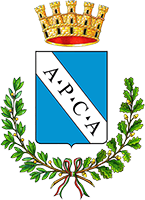
Near the Cathedral, in the square dedicated to the last Bishop of Amelia Vincenzo Lojali (Attigliano 1894 – Amelia 1966), there are some buildings erected over the centuries to demonstrate the preeminence of the Church on the civic institutions: Here, there is the concentration of buildings used by the bishopric, such as the Episcopal Palace (15th century) and the Diocesan Seminary (1713, on a project attributed to Luigi Vanvitelli), as well as the vanished Baptistery, demolished in 1240 after the devastations of the Imperial Army of Frederick II of Svevia that invaded and ransacked the city, belonging to Guelph faith, damaging a lot of ecclesiastic buildings. The tower, erroneously called Civic, was probably erected as the Cathedral bell tower in 1050, before Amelia became a Free Municipality (1065): its twelve-sided plan, maybe recalls the twelve Apostles Christian symbology.
The presumed date of its original construction derives from the inscription “ANO DNI ML” on a block near the base of the building and the entrance door. The peculiarity of the tower lies in its present form, which is the result of three different and consecutive phases of construction. The lower section is composed by salvaged Roman and High Medieval materials, including big slabs of marble and travertine stone, architectural fragments with decorative motifs, low reliefs with illustrated scenes and a sundial.
The middle section contains 12th century mullioned windows, stopped up during the following ages to defend or to strengthen the structure, which suffered considerable damage in different occasions. Finally, the top section comes from a rehash intervention promoted by the Bishop Torquato Perotti, who rebuilt the upper part of the tower in 1641, that was left uncovered and where 4 bells are located. An internal steep spiral staircase connects three floors, and it ends on a terrace that is walled by blind square bricks alternated with big arched windows, from which a panoramic view across the hills of Amelia can be admired.


